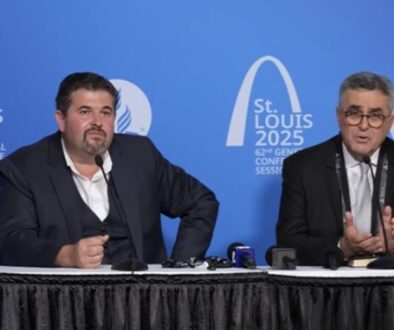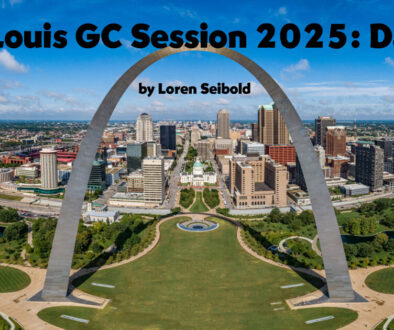The Rise of Tea Party Adventism
by Ervin Taylor
Adventism was born in the Northeastern United States in the mid-19th century. Many parts of traditional Adventist ideology have their origins in the American brand of 19th Century evangelical Protestantism. An influential book on the sociology and history of Adventism, Seeking a Sanctuary: Seventh-day Adventism and the American Dream, considered the role that American culture and politics played in forging the original Adventist sectarian eschatology.
In this formulation, Adventism adopted a largely negative view of what would happen in America ‘in the last days.’ American converts to Adventism were presented with the traditional Adventist vision of America which was considered to be a future potential enemy of the Adventist way of life.
However, it has been observed, especially since World War II, swings in the general mood of American Adventism and the mood of the American populist political culture, have been linked in both overt and subtle ways. In the 1960s, when the American body politic was adopting and implementing what were considered ‘liberal’ political and cultural values, American Adventism, with a phase lag of as much as a half decade, began to move in the same direction. When the American social, cultural and political ethos began to turn increasingly conservative, American Adventism began to turn increasingly conservative as well.
With few exceptions, prior to World War II, Adventism generally exhibited most of the classic characteristics of an institutionalized fundamentalist sectarian group. In the late 1950s and early 1960s, this orientation in North America began to change at major Adventist medical and educational centers and in some urban areas. Educational, economic and sociological factors caused segments of American Adventism to begin a cultural shift that opened it up to the influences of contemporary values and thought. It was within this relatively new context that the overtly progressive and liberal wing of Adventism emerged. At the same time, other well defined segments, the evangelical and historic most notably, also became more visible and identifiable. A view of Adventism created in the 1920s and 1930s as being a single monolithic church entity holding to a common set of timeless ‘Truths’ was finally exposed as a myth, revealing widespread disagreements over a long list of traditional beliefs.
With some exceptions, the American Adventist political landscape in the late 1950s and 1960s was relatively congenial to beginning a process of theological and cultural maturation. Although there were temporary setbacks at some local and regional levels, there were moderate and pragmatic administrators at some Union Conferences, at the North American Division, and at the General Conference (GC) who were either sympathetic to, or did not oppose, the process of moving toward cultural and theological maturity.
One notable exception involved the GC presidency of Robert H. Pierson (1911-1989) who held office from 1966 to 1979. After attempting to institute retrogressive policies, he stepped down frustrated that he had little power to counter the forces of change moving his church in progressive directions. Another exception was Robert S. Folkenburg (b. 1941) who served as General Conference President from 1990 to 1999. He sought to institute the monitoring of Adventist academic institutions but these attempts were stillborn when he resigned amid charges of inappropriate financial dealings.
Immediately before and following World War II, the need for accreditation of Adventist colleges developed, following the example of the accreditation of the Adventist medical school at Loma Linda. This had occurred some three decades earlier and the change was providing what many Adventist progressives viewed as increasingly positive results. Over the space of three or four decades, what had been in effect, Adventist Bible colleges, evolved into fully accredited liberal arts colleges. The jewel in the crown of Adventist higher education was, of course, the School of Medicine at Loma Linda University, no longer called by its former sectarian name of College of Medical Evangelists.
During all of this period, there were opposing conservative Adventist lay and clerical elements that were able to exercise some economic leverage and political power to inhibit some positive forward motion. However, the general tide in North American Adventism from the late 1960s into the 1980s was moving Adventism slowly away from its sectarian roots.
The high-water mark of this process is difficult to mark. One notable point was the year of the creation of an organization whose explicit agenda was to oppose progressive Adventism and return it to its sectarian roots. This organization was the Adventist Theological Society (ATS) and the year was 1988. This also dates the beginnings of what we wish to call Tea-Party Adventism, whose rise is associated with the current contentious and polarizing factionalism that characterizes contemporary North American Adventism.
In the next installment of this discussion, the origins and agenda of the ATS will be reviewed based largely on the documentation assembled by the late Dr. Raymond Cottrell, long-serving Adventist editor, author, educator, and founding editor of Adventist Today.



